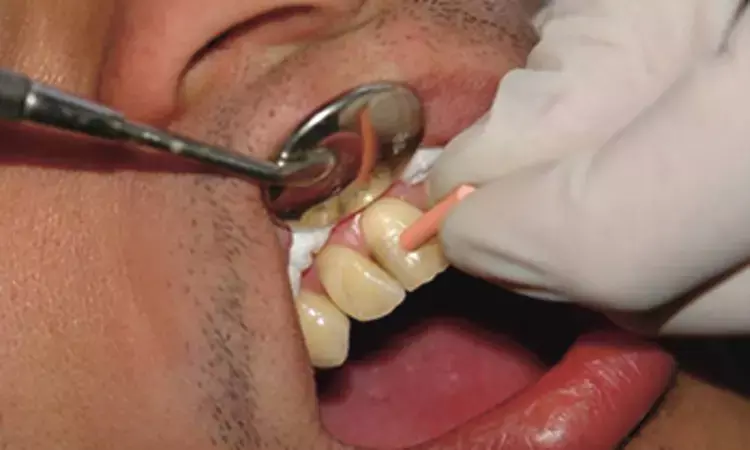- Home
- Medical news & Guidelines
- Anesthesiology
- Cardiology and CTVS
- Critical Care
- Dentistry
- Dermatology
- Diabetes and Endocrinology
- ENT
- Gastroenterology
- Medicine
- Nephrology
- Neurology
- Obstretics-Gynaecology
- Oncology
- Ophthalmology
- Orthopaedics
- Pediatrics-Neonatology
- Psychiatry
- Pulmonology
- Radiology
- Surgery
- Urology
- Laboratory Medicine
- Diet
- Nursing
- Paramedical
- Physiotherapy
- Health news
- Fact Check
- Bone Health Fact Check
- Brain Health Fact Check
- Cancer Related Fact Check
- Child Care Fact Check
- Dental and oral health fact check
- Diabetes and metabolic health fact check
- Diet and Nutrition Fact Check
- Eye and ENT Care Fact Check
- Fitness fact check
- Gut health fact check
- Heart health fact check
- Kidney health fact check
- Medical education fact check
- Men's health fact check
- Respiratory fact check
- Skin and hair care fact check
- Vaccine and Immunization fact check
- Women's health fact check
- AYUSH
- State News
- Andaman and Nicobar Islands
- Andhra Pradesh
- Arunachal Pradesh
- Assam
- Bihar
- Chandigarh
- Chattisgarh
- Dadra and Nagar Haveli
- Daman and Diu
- Delhi
- Goa
- Gujarat
- Haryana
- Himachal Pradesh
- Jammu & Kashmir
- Jharkhand
- Karnataka
- Kerala
- Ladakh
- Lakshadweep
- Madhya Pradesh
- Maharashtra
- Manipur
- Meghalaya
- Mizoram
- Nagaland
- Odisha
- Puducherry
- Punjab
- Rajasthan
- Sikkim
- Tamil Nadu
- Telangana
- Tripura
- Uttar Pradesh
- Uttrakhand
- West Bengal
- Medical Education
- Industry
Novel electronic pulp sensitivity tester with transilluminator efficient and safe method to heat test pulp

A novel electronic pulp sensitivity tester with a transilluminator efficient and safe method to heat test pulp suggests a new study published in the Journal of Endodontics.
The efficacy and safety of a single novel electronic pulp sensitivity tester with a transilluminator (PSTT) capable of providing 4 different tests were compared with gold standard (GS) pulp testing methods.
Four hundred eighty teeth, including 3 from each quadrant and their contralateral and opposing teeth, were randomly assessed using the PSTT or GS methods. Seven days later, the same teeth were assessed using the method not used earlier so that all teeth were evaluated using both methods. Sixty previously root canal–treated teeth, serving as negative controls, were assessed identically to the experimental groups. Results were analyzed using IBM SPSS software (IBM Corp, Armonk, NY) (P < .05).
Results
A higher percentage of teeth responded to cold and electricity using GS methods compared with the PSTT (99.4 vs 93.1 and 99.6 vs 97.3, respectively). A lower percentage of teeth responded to heat using the GS method compared with the PSTT (50.0 vs 68.1). Chi-square tests determined differences in the proportion of sensitivity to temperature, and electric testing methods were statistically significant (P < .001 and P = .004, respectively). No difference in the proportion of sensitivity was observed for transillumination. The Wilcoxon signed rank test determined significantly shorter cold testing times using the GS method (P = .024). Shorter testing times were observed using the PSTT for heat (P < .001), electric pulp testing (P = .048), and transillumination (P = .001). The overall PSTT testing time was significantly shorter than the GS testing time (P = .03). Tissue injury was not observed.
The PSTT efficiently and safely provided heat and transillumination for pulpal diagnosis. Improvements are needed to enhance the cold and electric stimulus efficacy.
Reference:
Comparison of the Efficacy and Safety of Pulp Sensitivity Testing Results Using a New Pulp Testing Device versus Some Commonly Used Methods: A Crossover Study
Patricia A. Tordik, Mahmoud Torabinejad, Cassandra M. Fevelo, Mason Bahador, DDS, MS, Udochukwu Oyoyo, Published:October 13, 2023DOI:https://doi.org/10.1016/j.joen.2023.10.003
Keywords:
Novel, electronic, pulp, sensitivity, tester, transilluminator, efficient, safe, method, heat, test, pulp, Testing Device versus Some Commonly Used Methods: A Crossover Study
Patricia A. Tordik, Mahmoud Torabinejad, Cassandra M. Fevelo, Mason Bahador, DDS, MS, Udochukwu Oyoyo
Dr. Shravani Dali has completed her BDS from Pravara institute of medical sciences, loni. Following which she extensively worked in the healthcare sector for 2+ years. She has been actively involved in writing blogs in field of health and wellness. Currently she is pursuing her Masters of public health-health administration from Tata institute of social sciences. She can be contacted at editorial@medicaldialogues.in.
Dr Kamal Kant Kohli-MBBS, DTCD- a chest specialist with more than 30 years of practice and a flair for writing clinical articles, Dr Kamal Kant Kohli joined Medical Dialogues as a Chief Editor of Medical News. Besides writing articles, as an editor, he proofreads and verifies all the medical content published on Medical Dialogues including those coming from journals, studies,medical conferences,guidelines etc. Email: drkohli@medicaldialogues.in. Contact no. 011-43720751


